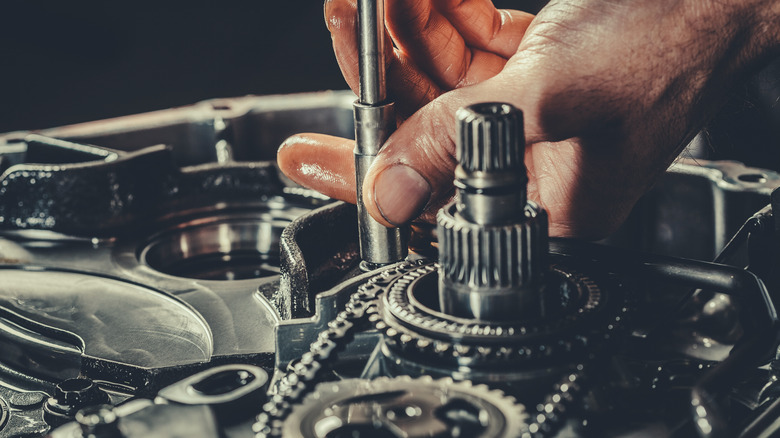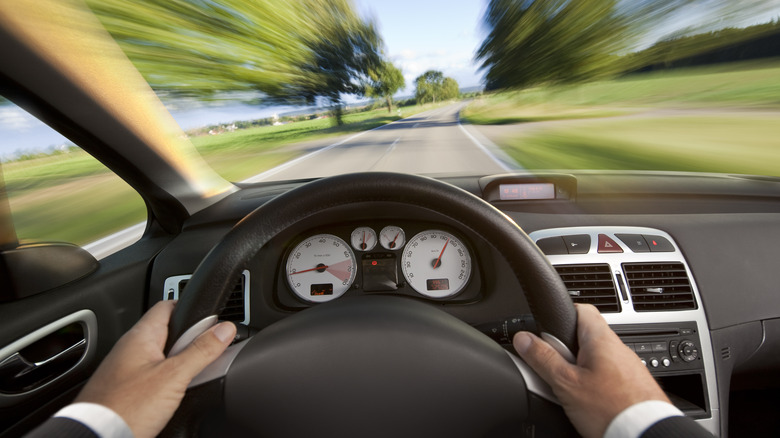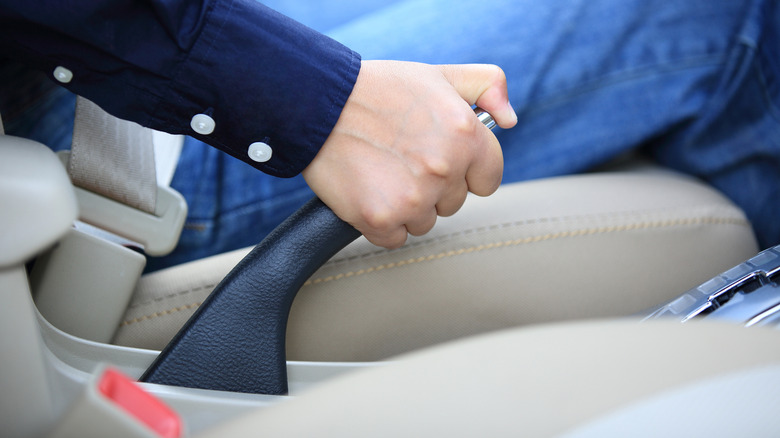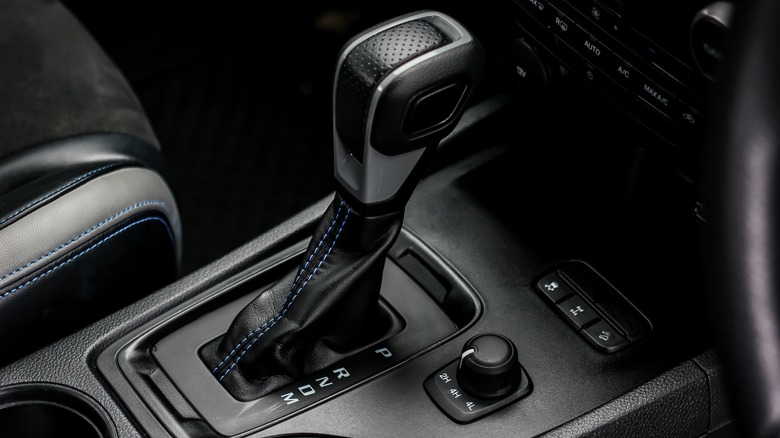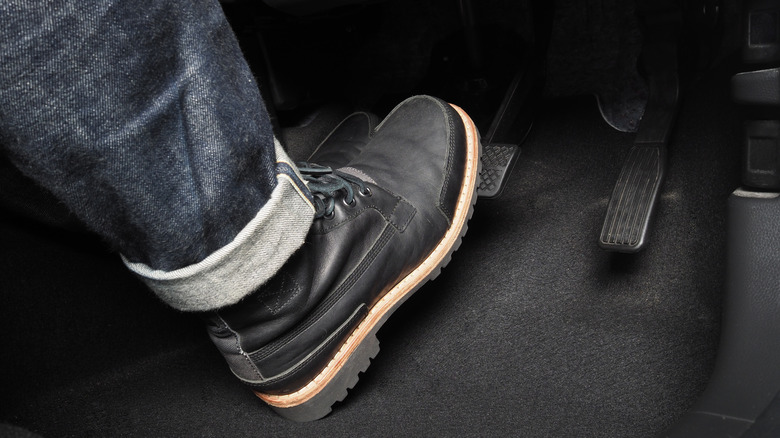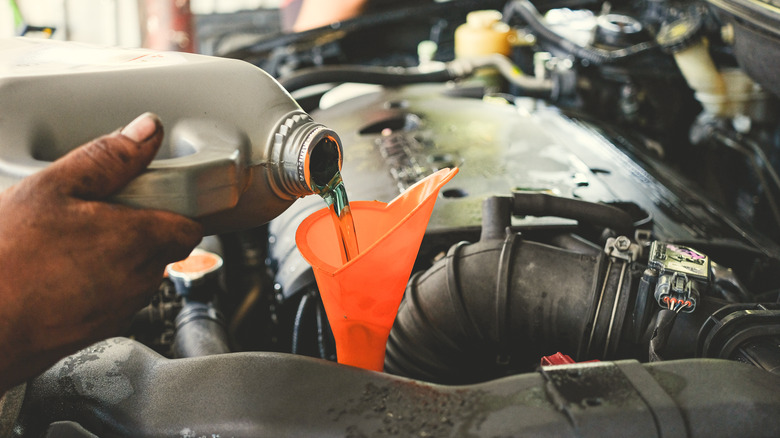5 Bad Habits That Might Be Harming Your Transmission
If you're like most people, you probably go into autopilot when driving, rarely, if ever, thinking about how the habits you've formed over the years could negatively affect your vehicle's transmission. Even if you took Driver's Ed in high school or did a behind-the-wheel training course, chances are you didn't learn much about how to avoid doing things that could damage your transmission. And that's unfortunate because the transmission is one of the most important parts of your car, responsible for shifting gears and ensuring smooth acceleration. You can think of it as the middleman between your engine and wheels that makes sure everything is working as it should.
Many of us unwittingly do things like skipping regular maintenance and shifting gears before coming to a stop, which puts unnecessary stress on the transmission. Given its importance in keeping your vehicle functioning, when something goes wrong, repairing an automatic transmission can be costly. While it may be true that old habits die hard, being aware of some of the things you're doing that could be causing premature wear and tear to your transmission may help you change your ways and save yourself the headache of expensive reparations down the line.
Aggressive acceleration and braking
As tempting as it might be to test your car's limits by putting the pedal to the metal, this type of aggressive acceleration can cause problems for your transmission. When you floor it to speed from one red light to the next, you cause your car to shift gears abruptly, straining the transmission. As your speed increases, transmission fluid burns more quickly, causing it to overheat. Most vehicles can't handle this type of stress, and over time, it can lead to significant damage or even the need for a complete rebuild or replacement of your transmission.
If you're accelerating quickly, chances are you're also hard-braking, which can also place undue stress on your vehicle. The best preventative measure you can take to slow wear and tear on your transmission from accelerating and breaking is to gradually accelerate and decelerate when possible. While there will be times when hard braking and quick acceleration are necessary, minimizing these situations will place less stress on your transmission, improve fuel efficiency, and possibly extend the lifespan of your car.
Not using the parking brake
If you're like most people, your vehicle's parking brake is an afterthought. You may not engage it until you notice your car slipping backward on one of the rare occasions you've parked on a hill with a steep incline. It's one of the common driving habits that might be damaging your car, and you might not know that you should also use the parking brake on flat services to reduce strain on your transmission.
When you don't use your parking brake, all of your car's weight rests on the transmission, specifically on a small component known as the parking pawl in automatic transmissions. This component isn't designed to hold your car stationary all the time, and relying on it too heavily can lead to wear and potential failure.
Your vehicle's parking brake, also known as the emergency brake or handbrake, is a critical backup to its primary braking system. When used correctly, it keeps your vehicle from rolling away when parked and also protects the transmission. If you have a car with a manual transmission, the parking brake is even more important since it's the primary way of keeping your vehicle in place while parked, preventing unnecessary strain on the gearbox and clutch.
Shifting gears while in motion (automatic transmission)
While you may be in the habit of shifting from drive to reverse (or vice versa) while your vehicle is still moving, doing so can potentially stress or damage the transmission. To understand why you should never shift gears while your car is in motion, it'd be a good idea to learn about how an automatic transmission works. Shifting gears while your car is still moving forces the components to work against the vehicle's momentum, leading to jerky movements and abrupt stress on the gears and the transmission mechanism. Doing this regularly could damage the transmission's internal components, like the gears and clutch discs.
While modern vehicles have electronic systems designed to prevent this kind of damage by stopping you from shifting in ways that could harm the transmission, it's still a good idea to be cautious. Make sure to always come to a complete stop before shifting from drive to reverse. Also be sure to check your vehicle's manual for manufacturer guidance on shifting gears, as it can help you become familiar with how to shift in different driving conditions specific to your vehicle.
Riding the clutch (manual transmission)
If you own a car with a manual transmission, chances are you've been guilty of riding the clutch, or not pressing it fully to the floor, at one time or another. You may do it at stop signs or stop lights to avoid braking. Perhaps you do it while shifting gears or when moving through slow-moving traffic.
The clutch is designed to fully engage or disengage from the drivetrain. Riding the clutch means you're neither fully engaging nor disengaging it, leading to increased friction between the clutch plate and the flywheel. All of this friction can cause the clutch to wear out faster and damage the transmission.
When you ride the clutch, it slips, generating excessive wear and tear. Eventually, this slipping may cause the components to fail prematurely, stress the transmission further, and degrade other components, including the gearbox and the clutch release bearing. This happens because riding the clutch interrupts the transfer of engine power to the drivetrain, causing inefficient power delivery and increased wear on the transmission components. While riding the clutch may seem like an innocent habit, it's one of the things you need to stop doing if you drive a manual transmission car.
Ignoring transmission fluid levels
The type of car you have and how you drive it will play a large role in how often you need to change its transmission fluid. This fluid cools and lubricates the transmission's moving parts and helps maintain hydraulic pressure in cars with automatic transmissions. When your vehicle's transmission fluid drops below the ideal level, it can cause all sorts of problems, including inadequate lubrication, increased friction, overheating, and, eventually, mechanical wear and failure.
The longer you go without changing your car's transmission fluid, the more likely it is to accumulate debris, metal filings, and other contaminants, leading to clogged passages and decreased performance. Contaminated fluid can also cause erratic shifting, slipping, and complete transmission failure in the worst-case scenario. Most modern cars come equipped with computers and sensors that'll let you know when your transmission fluid gets too low, and it's important to respond quickly when you receive an alert.
